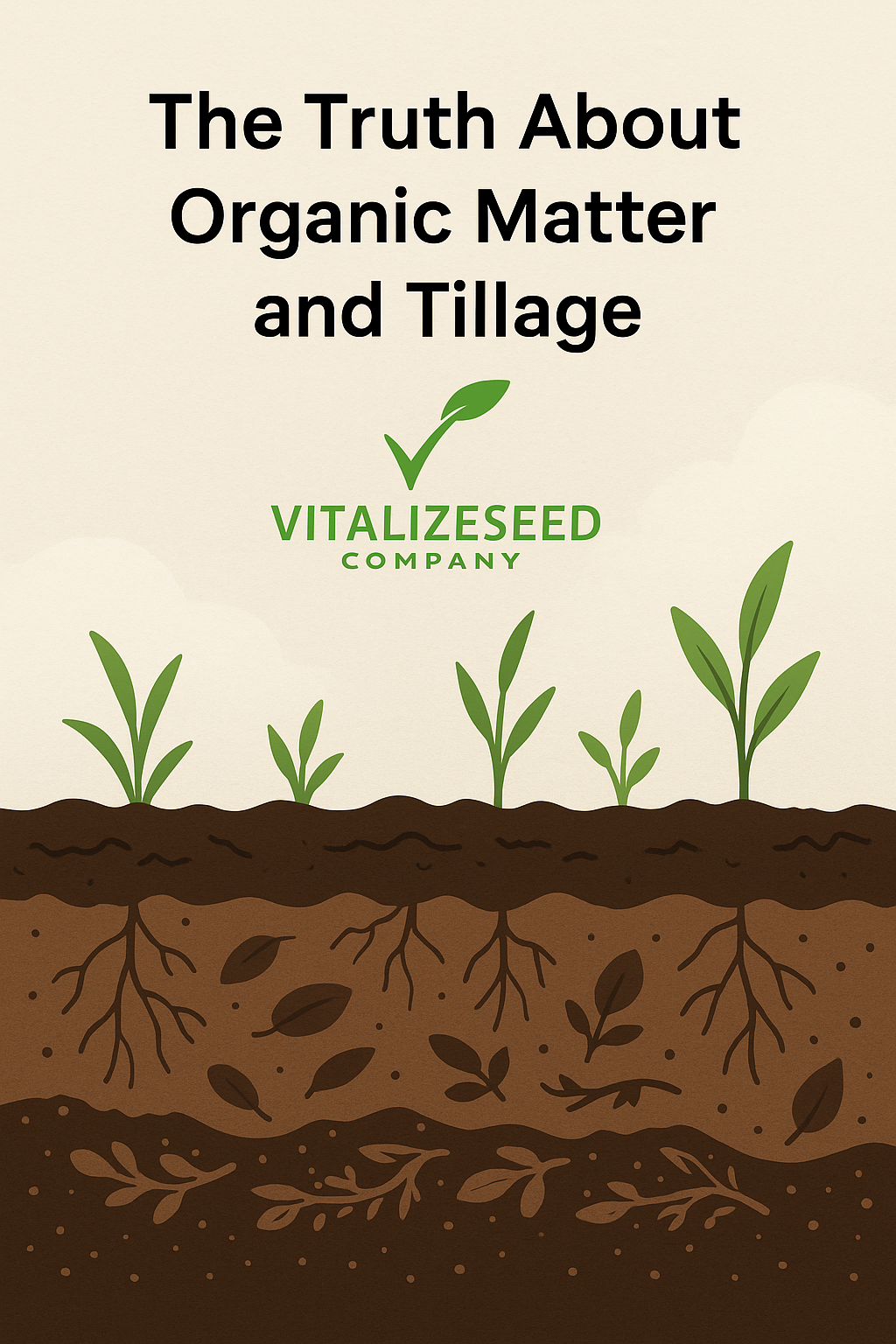
How Tillage Affects Soil Organic Matter: Facts You Need to Know
Share
The Truth About Organic Matter and Tillage
Organic matter (OM) is often the core focus of soil health discussions. It plays a big role as the engine of nutrient cycling, water retention, biological diversity, and long-term fertility. But when it comes to managing OM—specifically stable soil organic matter in relation to tillage—there's a lot of confusion, misconceptions, and, frankly, untruthful information.
Let’s unpack the facts: Tillage reduces soil organic matter. But it’s not always that simple. You may encounter growers who use tillage yet have increased SOM, but not without significant inputs and management efforts.
How Tillage Impacts Organic Matter
Tillage exposes soil to oxygen, which stimulates microbial activity. This spike in biological activity accelerates the breakdown of organic matter, releasing carbon dioxide (CO2) and effectively "burning off" OM. As a side note, this is one reason CO2 burst testing is considered a relative indicator rather than an absolute measure of soil health; tilled soils may show higher microbial respiration due to increased oxygen -but this doesn’t necessarily correlate with greater soil health or higher organic matter levels.
Tillage also disrupts fungal networks, breaks apart soil aggregates, and leaves the surface bare and vulnerable to erosion, temperature extremes, and moisture loss.
So, in most cases, tillage is a net loss for OM. But here’s the nuance: If the organic inputs into the soil (like plant residues, roots, or manure) exceed the rate of OM loss, it’s still possible to increase OM even in tilled systems. This, however, requires intensive management—high-residue crops, regular organic amendments, and reduced-intensity practices such as strip-till or conservation tillage.
Why No-Till Systems Build OM More Effectively
No-till and reduced-till systems make it easier to build and maintain organic matter. These systems are highly effective at:
- Slowing microbial breakdown of OM – primarily when carbon-to-nitrogen (C: N) ratios of planting sequences are managed. (Check out the Vitalize Seed 1-2 system for an example.)
- Encouraging mycorrhizal fungi, which improve nutrient cycling and solubility and create stable soil aggregates
- Protecting the soil surface with plant residues, reducing erosion, water loss, and high-temperature stress
- Promoting long-term humus formation, a highly stable form of OM
- Increasing microbial biomass and necromass, which contribute to nutrient cycling and plant nutrient uptake
These systems support the biological engine of the soil—fungi, bacteria, earthworms, and roots—which work together to build structure, store nutrients, reduce stratification, and cycle carbon.
While deep nutrient movement from rock weathering is slow, deep-rooted plants and mycorrhizal fungi can access and transport nutrients from subsoil layers, contributing to fertility over time. This biological activity enhances the cycling and availability of nutrients already present in the soil bank—without aggressive mechanical intervention.
The Thermodynamic Reality
Soil organic matter follows a simple equation:
Change in SOM = Inputs - Losses
Tillage increases losses, while no-till minimizes them. If inputs (biomass, roots, manure, compost) outpace losses, SOM builds. If not, it declines.
Tillage is highly effective at increasing oxygen availability, which speeds up microbial OM breakdown. Even tilling in cover crops often provides a temporary food source for microbes but doesn’t leave behind enough carbon to contribute meaningfully to SOM.
If building OM is your goal, then input preferably organic in nature—must be increased in tillage systems to offset losses.
This isn’t just an opinion; it’s biology and thermodynamics. Understanding this balance helps farmers and land managers make decisions aligned with their goals.
In Conclusion:
- Tillage almost always increases OM decomposition. Some soils with high baseline OM can withstand this initially, but sustainability must be monitored over time.
- SOM can still increase under tillage, but only with high organic inputs and careful management.
- No-till systems foster the biology and conditions necessary for stable OM accumulation—but only if managed well. This includes balancing C: N ratios, using diverse cover crops, and maintaining appropriate pH and nutrient saturation levels.
